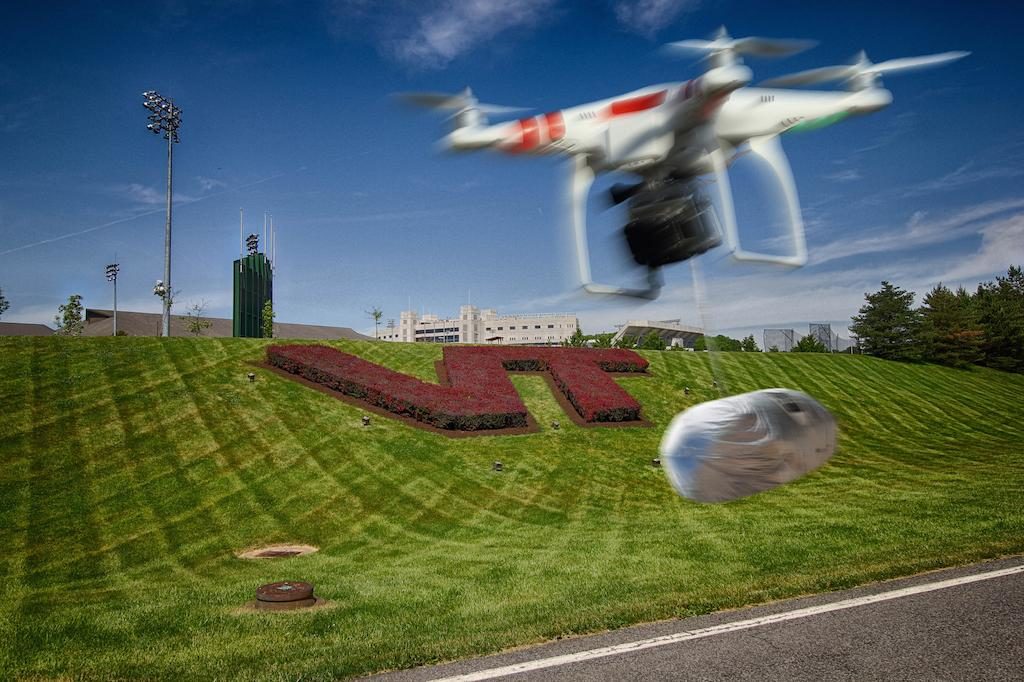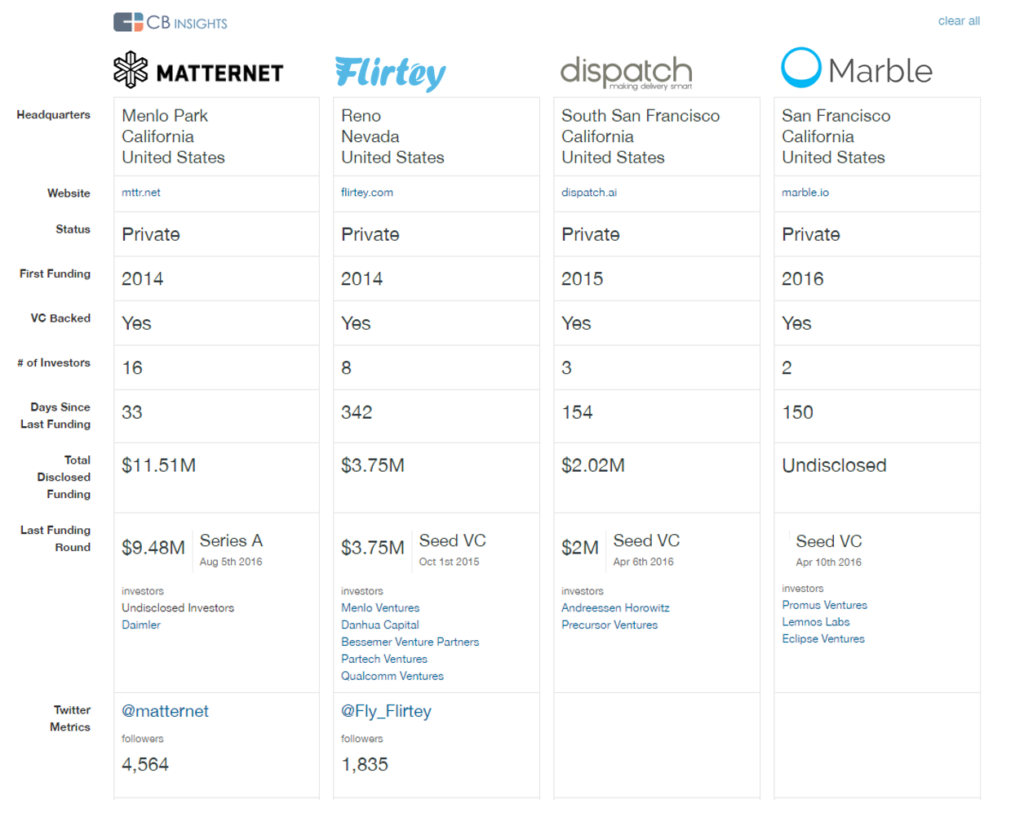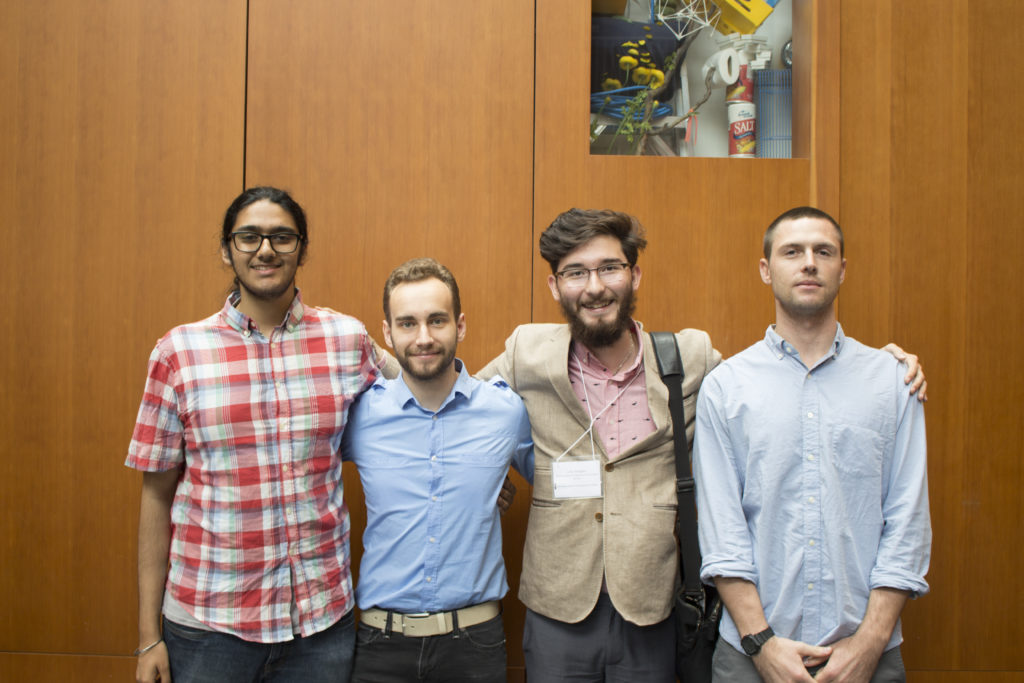It’s been two years since Amazon’s Jeff Bezos exclaimed that Amazon would soon deliver packages by drones, and that though the concept of it ‘seem like science fiction,’ it actually isn’t. What was first believed to be a publicity stunt to get Christmas shoppers in 2014 to think about Amazon is now reality, with the drone industry full of major market players fighting for share, and regulators being forced to change air laws and reconsider security issues with existing ones.
Alphabet, Google’s parent company recently announced its plans to use drones to deliver burritos to a small number of staff and students at Virginia Tech, in its ambitious attempt to quicken deliveries and compete with the largest players of the logistics industry. To do this, it has partnered with Chipotle, who after recently closed stores and an E-Coli outrage that damaged its reputation and market share, is working on rebranding itself. The flights will be the first time Alphabet will be delivering to non-employees in the US. Flirtey, one of many drone delivery startups is one of the few to have run other drone delivery tests before this.
The drones are meant to fly over an automated route near Virginia Tech’s campus and remain in sight of an operator who can take control of the aircraft if necessary – the test will be conducted from a federally sanctioned drone testing zone. The FAA will keep a handle on data from Google X, showing signs that regulators are slowly opening up to the idea of private drones, yet hesitant of easing regulations around drone deliveries and drones flying out of sight of operators. For now, though, new FAA drone rules include restrictions that have halted the conception of large scale deliveries in their tracks. Until those rules such as that of drones needing to be in eye-sight are changed, which likely will take years, delivery drones in the U.S. will be limited.

“We want to learn how people feel when they’re receiving a package by air,” X chief Astro Teller said in a blog post Thursday. “Technology is shaped and changed as it makes contact with the real world. In future tests, we could add a broader range of items, like drinks, which will push us to handle more weight, keep packages carefully balanced, and manage combinations of items on a single flight.”
In the long run, Google says it does not just want to look at the economics of drone delivery; possible applications include potentially delivering medicine and batteries to areas affected by natural disasters.
Keeping in mind that drone delivery sizes are likely to be limited over the next few years, some visitors at this year’s SCET Berkeley Method of Entrepreneurship Bootcamp explored the drone delivery dilemma. The eventual winners of the competition, MIR, proposed a drone that can carry the weight of up to 8 drones, and challenge traditional delivery networks such as USPS and FedEx. Their presentation can be seen below, and their slides are available to view here.
Though the concept of drone delivery may seem uniform, the kind of business model used highly varies within startups; more about drone delivery economics and their feasibility can be learnt through CB Insight’s latest research, which reveals strong interest in various kinds of drone delivery startups (a sign that VCs are highly interested in the concept and willing to explore various business models), and explores the approach taken by each startup:

All four of the startups involved in the delivery space shown above are pursuing wholly different approaches in aerial (Flirtey and Matternet) versus ground-based solutions (Dispatch and Marble). Aerial drones must contend with air-traffic regulation and safety concerns, while ground-based vehicles are more susceptible to vandalism and theft. Whereas Flirtey and Matternet focus on lightweight & low-cost deliveries meant to simplify small parcel deliveries as well as transport aid to rural areas and disaster zones, Dispatch and Marble aim to build fleets of ground-based autonomous robots for last mile deliveries.
The one thing that seems clear in all this, is that regardless of the delivery method and business model being used in the drone delivery space, the industry is likely to have a strong impact on the logistics and delivery business of tomorrow.
It’s been two years since Amazon’s Jeff Bezos exclaimed that Amazon would soon deliver packages by drones, and that though the concept of it ‘seem like science fiction,’ it actually isn’t. What was first believed to be a publicity stunt to get Christmas shoppers in 2014 to think about Amazon is now reality, with the drone industry full of major market players fighting for share, and regulators being forced to change air laws and reconsider security issues with existing ones.
Alphabet, Google’s parent company recently announced its plans to use drones to deliver burritos to a small number of staff and students at Virginia Tech, in its ambitious attempt to quicken deliveries and compete with the largest players of the logistics industry. To do this, it has partnered with Chipotle, who after recently closed stores and an E-Coli outrage that damaged its reputation and market share, is working on rebranding itself. The flights will be the first time Alphabet will be delivering to non-employees in the US. Flirtey, one of many drone delivery startups is one of the few to have run other drone delivery tests before this.
The drones are meant to fly over an automated route near Virginia Tech’s campus and remain in sight of an operator who can take control of the aircraft if necessary – the test will be conducted from a federally sanctioned drone testing zone. The FAA will keep a handle on data from Google X, showing signs that regulators are slowly opening up to the idea of private drones, yet hesitant of easing regulations around drone deliveries and drones flying out of sight of operators. For now, though, new FAA drone rules include restrictions that have halted the conception of large scale deliveries in their tracks. Until those rules such as that of drones needing to be in eye-sight are changed, which likely will take years, delivery drones in the U.S. will be limited.

“We want to learn how people feel when they’re receiving a package by air,” X chief Astro Teller said in a blog post Thursday. “Technology is shaped and changed as it makes contact with the real world. In future tests, we could add a broader range of items, like drinks, which will push us to handle more weight, keep packages carefully balanced, and manage combinations of items on a single flight.”
In the long run, Google says it does not just want to look at the economics of drone delivery; possible applications include potentially delivering medicine and batteries to areas affected by natural disasters.
Keeping in mind that drone delivery sizes are likely to be limited over the next few years, some visitors at this year’s SCET Berkeley Method of Entrepreneurship Bootcamp explored the drone delivery dilemma. The eventual winners of the competition, MIR, proposed a drone that can carry the weight of up to 8 drones, and challenge traditional delivery networks such as USPS and FedEx. Their presentation can be seen below, and their slides are available to view here.
Though the concept of drone delivery may seem uniform, the kind of business model used highly varies within startups; more about drone delivery economics and their feasibility can be learnt through CB Insight’s latest research, which reveals strong interest in various kinds of drone delivery startups (a sign that VCs are highly interested in the concept and willing to explore various business models), and explores the approach taken by each startup:

All four of the startups involved in the delivery space shown above are pursuing wholly different approaches in aerial (Flirtey and Matternet) versus ground-based solutions (Dispatch and Marble). Aerial drones must contend with air-traffic regulation and safety concerns, while ground-based vehicles are more susceptible to vandalism and theft. Whereas Flirtey and Matternet focus on lightweight & low-cost deliveries meant to simplify small parcel deliveries as well as transport aid to rural areas and disaster zones, Dispatch and Marble aim to build fleets of ground-based autonomous robots for last mile deliveries.
The one thing that seems clear in all this, is that regardless of the delivery method and business model being used in the drone delivery space, the industry is likely to have a strong impact on the logistics and delivery business of tomorrow.


